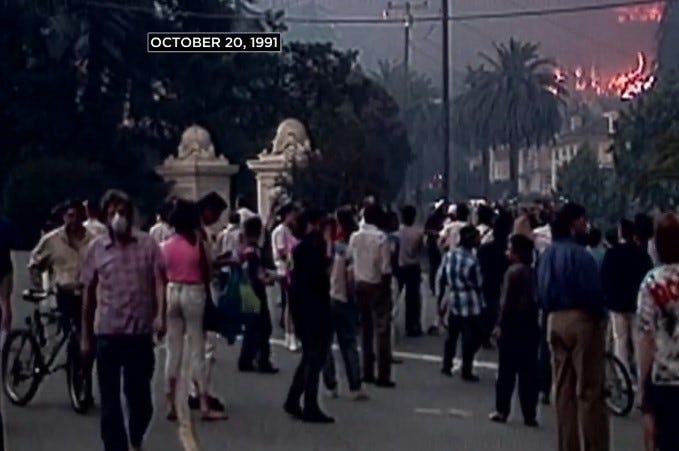
Three decades ago, one of California’s deadliest wildfires claimed 25 lives in the East Bay.
In the wake of the 1991 Oakland Hills Tunnel Fire, evacuation plans were released in the event that another blaze breaks out in the area. New technology and strategies might help prevent the same level of tragedy caused by the gridlock of everyone trying to evacuate at the same time.
But those new innovations might not go far enough.

One element includes pathways cut into the hills of Berkeley, a confusing web of routes that are meant to be used for an evacuation on foot, if the need should occur. According to members of the Berkeley Path Wanderers Association, a group dedicated to traversing the area’s walkable routes, people should familiarize themselves with as many paths as possible.
"I can tell you from my own experience, if you are having to evacuate, you’re not thinking with your head, you’re thinking with your gut, and that adrenaline is flowing through you, and that’s not the time to be developing your plan, so you need to practice ahead of time," said Oakland Fire Safe Council President Sue Piper.
"When you’re evacuating, everyone’s leaving at the same time," said Piper. "When I left in 1991, unless somebody stopped to let me in, I would have been stuck in my driveway."
According to Piper, it took an hour for people to be able to get off the hill.
People didn’t have their shoes on, were carrying their belongings with them, "trying to back out of their driveways where traffic is trying to flow," said Berkeley Fire Department Assistant Chief Keith May of video footage from the disaster.
Since 1991, tools have been developed to better notify people of ongoing events and disasters, including reverse 911 and direct cell phone notifications. One such innovation, Zonehaven, has proven particularly useful in wildfire evacuations, said May.
The service essentially takes existing evacuation zones in a city and “refines” them using an algorithm that takes into account the number of residents in a geographic area that would need to head to a safe zone, he said.
But even with these advantages, it’s difficult to predict how a wildfire will play out, like with the 2017 Grizzly Peak fire. "It was a nightmare," said May.
That fire, along with other deadly fires in recent years, pushed Berkeley to hold a drill in 2019. More drills are needed though, especially in Oakland, according to Oakland Firesafe Council Project Manager Doug Mosher.
"All this technology is great, but it relies on, obviously, cellular networks being up and internet working," said Mosher. Large firestorms can take down those networks, leaving people without communications options, he said.

